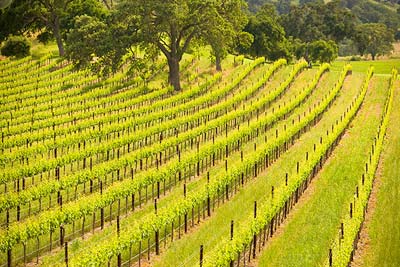Use Backlighting for Leaves and Flowers

Although much of Southern California is either dry chaparral or even drier desert, winter rains create a transformation that belies the arid climate, quickly turning everything green for a short month or two. This metamorphosis is especially dramatic in the wine country located just north of Santa Barbara, California.
I stumbled on this location while driving the winding Foxen Canyon Road off of Highway 154 near the town of Los Olivos. The image is from my soon to be released book “The Beautiful Santa Ynez Valley”. Spring in the Santa Ynez Valley is a collage of new leaves, all painted in different shades of green. The tender, new grape leaves in the vineyards are an especially vibrant yellow-green when backlit.

© 2007 Chuck Place, Los Angeles DPA Instructor
I positioned myself on a nearby hillside and set my camera on a Gitzo tripod, framing the landscape tightly with a zoom lens. The zoom range made it possible to crop out extraneous buildings and compress the rows of vines as they flowed over the hills. I made sure to shade the front element of my lens from the sun to avoid flare and opened up 2/3 of a stop from the meter reading.
Anytime I photograph flowers or leaves, I try to use backlighting. Light passing through a leaf will produce a much more saturated color than light reflecting off the surface. And in this situation, the soft green of new spring leaves is exactly what I am trying to capture.



